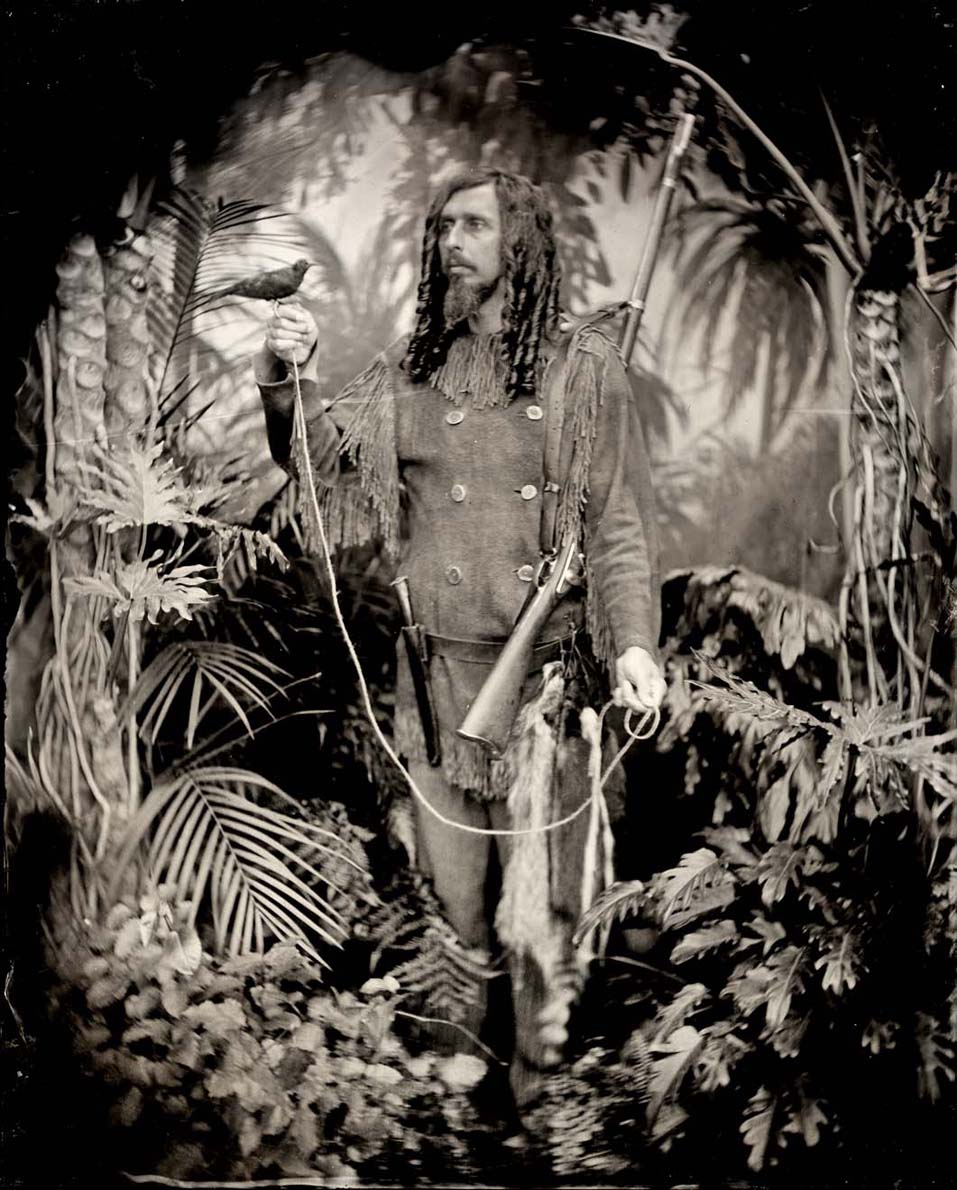
September 13 - November 23, 2008
Stephen Berkman explores the fleeting ephemeral qualities of images formed by the natural convergences of light and optics. He uses antiquated techniques and camera chambers to reinterpret notions of the nineteenth century. Occupying darkened chambers, his camera obscuras invite visitors into realms where transient images play with perceptions of reality. Chamber Pieces featured a number of Berkman's photographs made using the 19th-century wet-collodion photographic process of exposing images onto glass and tin plates. The experience of viewing one of his photographs is akin to the discovery of a lost world from a bygone era. His intricate compositions convey complex narratives that go far beyond the frame. The exhibition also presented several of Berkman's camera obscura pieces. Using a few, simple tools, such as lenses, spotlights and scrims, Berkman conjures up unexpected, fleeting "objects" created when light and optics converge. Housed in darkened chambers, his camera obscuras invite visitors into realms where transient images play with perceptions of reality. Two of his installations, A History of Natural History and Alternating Eye were newly created especially for this exhibition.
Berkman's work revolves around the use of antiquated photographic and optical processes. Berkman exploits the archaic quality of the wet-collodion process, which dates back to the 1850s. His work seeks to refute the notion of history being a closed circuit; instead history is viewed as a work in progress, still receptive to moments of serendipity. In his book Photography's Antiquarian Avant-Garde Lyle Rexer states "Stephen Berkman finds in the ambrotype an opportunity for theatrical fabrication, with history itself as a collaborator. Berkman uses collodion to anchor implausibility and give unreality a historical patina. He stages elaborate tableaux with 19th-century characters performing for some obscure purpose." Berkman's installation work explores the era of pre-chemical photography, both literally and philosophically. While his constructions encompass optical projections and sculptural reinterpretations of the camera obscura, his body of work as a whole examines the intrinsic nature of photography, when it was possible to create fleeting images, but impossible to fix them into permanent photographs. The search to rediscover the temporary nature of pre-photographic history, the scientific interplay of light and optics and the quest for optical amusements, also known as philosophical instruments, are uniquely considered throughout Berkman's work.